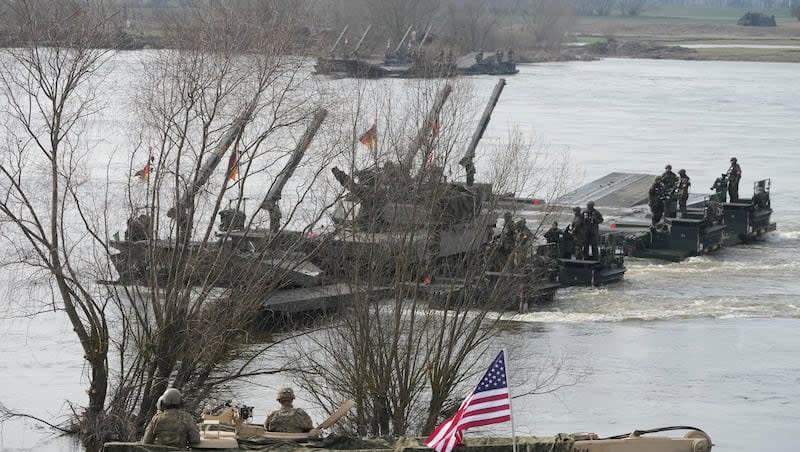Opinion: The anomaly of NATO

- Oops!Something went wrong.Please try again later.
- Oops!Something went wrong.Please try again later.
The European Security Conference, held in Munich Germany in February, has highlighted transatlantic cooperation in the face of Russia’s war on Ukraine. Vice President Kamala Harris and Secretary of State Antony Blinken addressed the gathering.
Vice President Harris underscored the growing importance of Africa, along with U.S. commitment to world engagement. Also at center stage, Secretary Blinken demonstrated broad foreign policy expertise developed over years of government service. Both put to good use the opportunity to emphasize collegiality with allies.
The conference underlines the durability of NATO, North Atlantic Treaty Organization. The alliance was founded in 1949 to resist expansion of the Soviet Union.
An immediate impetus was Moscow’s 1948 blockade of West Berlin, which was located deep inside the Soviet occupation zone of divided Germany. More broadly, however, the comprehensive Cold War had already begun, reaching beyond divided Berlin in a divided Germany.
Originally envisioned as temporary, pending a comprehensive peace settlement after victory over Nazi Germany, the occupation zones became solidified and endured throughout the Cold War. The end of that conflict followed the people’s dismantling of the Berlin Wall in 1989, the reunification of Germany and finally the disintegration in 1991 of the Soviet Union.
Alliances involve tensions and conflicts, inevitably, as officials regularly point out. Recent Republican administrations have been relatively challenging. President Donald Trump was harshly, literally disruptive publicly in constantly vocally pressing Europeans to devote more to defense. President George W. Bush, and in particular Vice President Dick Cheney, pressed to expand NATO right up to Russia’s borders.
The alliance is fundamentally anomalous. An organization founded to oppose Soviet expansion saw that mission end successfully several decades ago, yet continues to exist. Cold War victory has resulted in debate about best future roles, not abandonment of the alliance.
Terrorist killers on 9/11 triggered NATO for the first time to defend an ally under attack. French aircraft patrolled North American skies to free our own for attacks in Afghanistan, which became a NATO theater of operations. After 9/11, Munich themes expanded to include cooperation to fight terrorist groups.
The NATO alliance is a cornerstone initiative, dating from the early years of the Cold War, but there are also a range of economic institutions dating from the Marshall Plan of the same period. They include the European Union and such predecessor organizations as the Western Union and the Western European Union, along with the cornerstone European Economic Community. The industrialized nations were concentrated in the Atlantic region, and there were no comparable Asian initiatives immediately after World War II.
That situation has obviously changed dramatically. After 9/11, Japanese warships patrolled the Indian Ocean for the first time since 1945, as part of a collective response under U.N. auspices. The APEC — Asia Pacific Economic Cooperation — organization is one relatively recent Asian initiative and still defining a principal role.
NATO was vital to the Cold War victory, and reflects the importance of handling military challenges through alliance structures whenever possible, a basic lesson of World War II.
Ironically, “Munich” has served as a shorthand reference to appeasement, thanks to British Prime Minister Neville Chamberlain’s acquiescence to Adolf Hitler’s territorial demands just before Nazi Germany launched World War II in Europe.
The Munich conference now possesses an extremely well-established foundation for the next policy moves by North American, European and other participants. In order to succeed, these efforts must transcend traditional regional security organizations.
Arthur I. Cyr is author of “After the Cold War — American Foreign Policy, Europe and Asia.” Contact acyr@carthage.edu.

